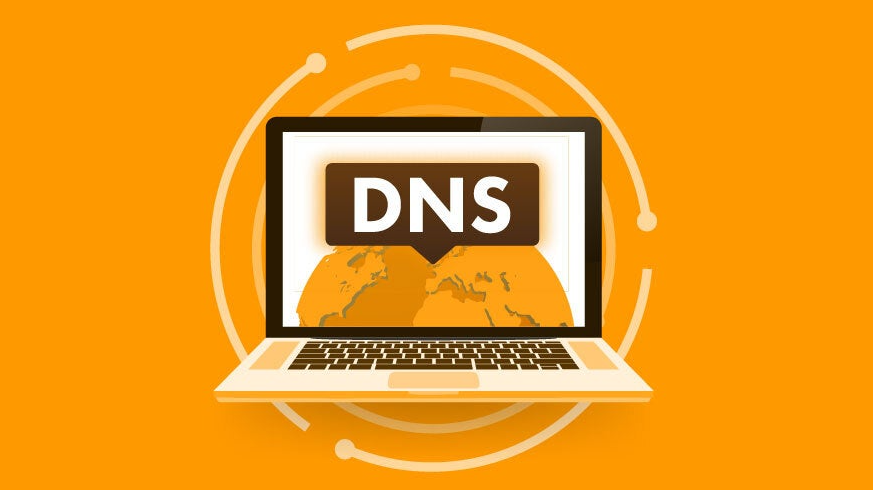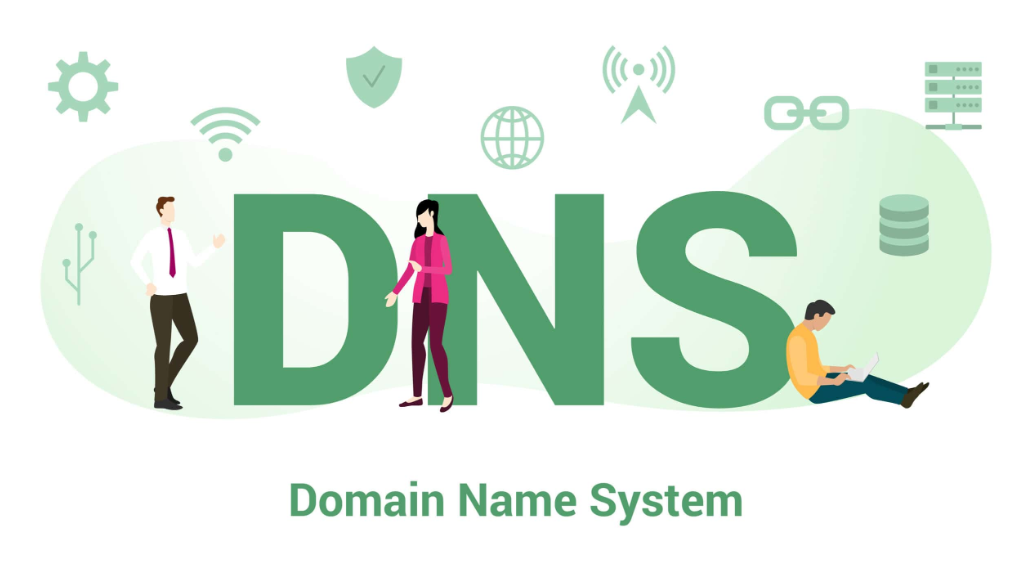Nameservers are some of the most essential elements of the otherwise almost infinite World Wide Web, and they are responsible for your website’s availability and operability. They act as a link that helps a user locate your website by giving them the desired domain name while at the same time enabling people to directly open your site by providing them with an IP address.
Without nameservers, navigating the web would be akin to wandering through a library without a catalog. In this blog post, we delve into what nameservers are, their significance, and why they are indispensable for your website’s success.
What Are Nameservers?
Nameservers are devoted servers that can handle requests in connection with the location of a domain name. These are part of the Domain Name System, which acts as the Internet’s telephone directory. Instead of requiring users to remember complex IP addresses like 192.0.2.1, nameservers translate easy-to-remember domain names like example.com into IP addresses that browsers can connect to.
Every domain has its specific nameservers that are primarily responsible for providing all the information regarding the specific domain it represents, including but not limited to IP address, mail server, and all other DNS records. When you enter a URL into your browser, the nameservers work behind the scenes to retrieve the correct IP address, allowing your browser to load the desired website.
The Importance of Nameservers for Website Accessibility
Nameservers ensure users can access your website using its domain name. With them, a browser would know where to locate your site’s server, leading to error messages. Reliable nameservers are vital as they directly affect the user experience and accessibility of your site.
Additionally, nameservers can influence your site’s speed. Nameservers requires time to parse your domain name to display on the Internet, leading to fast loading when a user accesses a site. Therefore, selecting high-performance nameservers is essential for a readily available and responsive website.
How Nameservers Work
When you type a URL into your browser, a sequence of events involving nameservers ensures you reach the correct website. Here’s a simplified breakdown:
- **DNS Query Initiation:** The process starts when your browser sends a DNS query for the domain name.
- **Recursive Resolver:** The query first hits a recursive resolver, often managed by your internet service provider (ISP).
- **Root Nameservers:** If the resolver lacks a cached IP address, it queries root nameservers, which direct it to the top-level domain (TLD) nameservers like .com or .org.
- **TLD Nameservers:** These then guide the query to the authoritative nameservers for the specific domain.
- **Authoritative Nameservers:** These servers store the DNS records for the domain and respond with the IP address of the server hosting the website.
- **Website Access:** Armed with the IP address, the browser can now load the website.
This multi-step process happens in milliseconds, showcasing the efficiency of nameservers.
Setting Up Nameservers for Your Domain
Setting up nameservers for your domain is essential to making your website accessible online. When registering a domain, the registrar usually provides default nameservers, but you may opt for third-party nameservers to boost performance or access additional features.
To set up nameservers, follow these steps:
- **Log into your domain registrar account:** Use the credentials you received when registering your domain.
- **Navigate to the DNS or domain management section:** This section is often labeled as DNS Management, Domain Settings, or something similar.
- **Enter the nameserver information:** Input the nameserver details provided by your hosting provider or third-party DNS service. This typically includes at least two nameservers, such as ns1.example.com and ns2.example.com.
- **Save the changes:** Confirm and save your updates. This action will initiate the process of redirecting your domain to the new nameservers.
- **Allow time for DNS propagation:** Be aware that DNS changes can take up to 48 hours to propagate across the Internet entirely. During this time, your site may be intermittently accessible as the changes take effect globally.
Properly setting up nameservers ensures that all DNS queries for your domain are correctly handled, directing visitors to your site without any issues.
Common Nameserver Issues and How to Resolve Them
Nameservers are usually dependable, but issues can occur that affect your website’s accessibility. Another common issue is having incorrect site DNS records; nothing is worse than having your site down. This shows that once in a while, you should ensure that you check and verify your DNS settings not to occur to you. Another frequent issue is propagation delays.
When you change your nameservers, it can take up to 48 hours for these changes to propagate across the Internet entirely. During this period, some users may experience intermittent access issues. To mitigate this, it’s advisable to plan updates during low-traffic periods and inform your users about potential disruptions.
Nameserver outages are another concern. If your nameservers go down, your website will become inaccessible. To ensure uptime, consider using redundant nameservers. This means configuring multiple nameservers so that if one fails, others can take over. Additionally, keeping your DNS software updated can prevent many issues stemming from software vulnerabilities.
Another potential issue is DNS caching. Sometimes, old DNS records can be cached by ISPs or browsers, leading to users being directed to outdated IP addresses. Clearing your local DNS cache and advising your users to do the same can help resolve this.
Lastly, be aware of security threats like DNS hijacking and DDoS attacks. Implementing security measures such as DNSSEC and rate limiting can protect your nameservers from these attacks. Regular security audits are also crucial to identify and fix vulnerabilities promptly.
The Role of Secondary Nameservers
Secondary nameservers are critical for ensuring the reliability and redundancy of your DNS infrastructure. These are typically the secondary types of the respective nameservers that guarantee query resolution in the event of primary server failure.
These secondary servers continuously synchronize with the primary nameserver, maintaining up-to-date DNS records. This process helps them cover the others if required, thereby least interrupting the website’s function and keeping it open for use. In fact, in order to distribute the load associated with DNS queries, not only do primary but also secondary nameservers have a positive impact on balancing the load and thus can positively affect the whole system’s performance.
Another advantage of secondary nameservers is their role in geographic redundancy. If your secondary servers are in different physical locations, your website will not be affected by local outages or regional internet problems. Such a geographic distribution also ensures site availability when one server cluster has experienced an outage.
Configuring secondary nameservers is straightforward and generally involves specifying additional nameserver addresses in your domain’s DNS settings. Almost all DNS management systems allow input of second-level nameservers, simplifying the strengthening of your site.
Having multiple nameservers can provide an additional layer of security in the event of a DDoS attack or other cyber threats, making it harder for attackers to disrupt your DNS service entirely. Regular monitoring and updates are essential to ensure that primary and secondary nameservers function optimally and securely.
Security Considerations for Nameservers
Nameservers are fundamental components and must not be exposed to several cyber risks. One is DNS spoofing, which occurs when the malicious party changes the DNS information provided to the victim. The next considerable danger is Distributed Denial of Service (DDoS) attacks, which are a process turned into a heist; the attacker floods the nameservers with requests, and your website is unavailable.
First, security should be improved; therefore, DNSSEC should be enabled as its vital extension. DNSSEC secures your DNS records, meaning your DNS data will be signed to enhance their authenticity and accuracy. Another technique is Rate limiting; it is a way to control the number of queries from a similar source because it may be used in a DDoS attack.
It is also relevant to carry out DNS security audits as often as possible. These audits work towards vulnerability discovery and enable you to patch up where and as soon as such flaws are discovered. Further, dual nameservers can be recommended in different geographical locations to make them more resistant to attacks or unplanned local events.
Protecting your nameservers also entails monitoring for suspicious occurrences. Develop monitoring tools to retrieve data concerning current possible threats. Adhering to these measures can dramatically lower your exposure to cyber threats and guarantee that your nameservers are always available and your site is online.
Remember also to periodically update your DNS software to evade the effects of recognized openings and/or cracks. If users regularly update their software, many security problems never occur.
Future Trends in DNS and Nameservers
The future of DNS and nameservers is shaped by technological advancements and evolving internet standards. Key trends include:
– **DNS Over HTTPS (DoH):** This protocol encrypts DNS queries, enhancing user privacy and security by preventing eavesdropping and tampering.
– **IPv6 Adoption:** With the depletion of IPv4 addresses, nameservers will increasingly manage DNS records for IPv6, ensuring compatibility and future-proofing.
– **Edge DNS:** To improve speed and reliability, edge DNS solutions position nameservers closer to end users, reducing latency and enhancing the browsing experience.
– **Automation and AI:** Leveraging artificial intelligence for DNS management can optimize query responses and automatically resolve common issues, enhancing reliability and performance.
– **Blockchain-Based DNS:** Decentralized DNS using blockchain technology offers enhanced security and resistance to censorship, providing a more robust and tamper-proof system.
– **Enhanced Security Protocols:** Future advancements will likely include more robust security measures to combat evolving cyber threats, such as improved DNSSEC implementations and new encryption standards.
Keeping abreast of these trends will help ensure your nameservers remain efficient, secure, and adaptable in the dynamic digital landscape.




